The Magnificent Seven stocks have propped up the stock market in what would have otherwise been a down year. If the S&P 500 was an equal-weighted index, it would have only been up by 0.1% year-to-date as of October 5th. The index has been slightly down since October 5th, implying an equally weighted index would have lost money for investors this year.
The Magnificent Seven stocks are household names that have performed well over the past year. However, not all of these stocks are good picks when looking at the years ahead. Some of these stocks carry notable risks that can result in sideways price movements or declines. It’s time to explore each of the Magnificent Seven stocks to discover which ones to keep and which ones to skip.
Alphabet (GOOG, GOOGL)

Alphabet (NASDAQ:GOOG, NASDAQ:GOOGL) looks like a cautious buy at the moment. October 24th earnings report will offer more insights, though. Alphabet makes most of its revenue from its advertising platform. It’s a revenue stream that can face downward pressure in a slowing economy.
Alphabet is laying off workers again. It’s a move that indicates cost-cutting measures in response to weakening consumer demand. While lower demand is just a theory at this point, the return of layoffs isn’t encouraging. Any hints of a slowdown in advertising can hurt the stock.
Microsoft (MSFT)
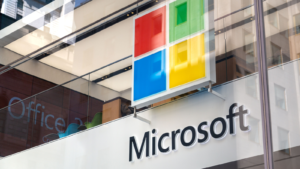
Microsoft (NASDAQ:MSFT) combines healthy financials with solid growth rates. Microsoft closed the fourth quarter of fiscal 2023 with an 8% year-over-year increase in revenue and a 20% increase in net income.
Microsoft has various business segments, such as gaming, cloud computing, business software, LinkedIn, and PCs. The company has a pristine balance sheet and enough current assets to comfortably cover current liabilities. In fact, the company’s $184 million in current assets is more than enough to address $104 million in total current liabilities. That’s good for a 1.77 current ratio.
Tesla (TSLA)

Tesla (NASDAQ:TSLA) is a stock to avoid as car sales slow down and people hold onto their older vehicles for longer periods of time. Cars have improved dramatically over the years, and it’s easier to rack up 300,000 miles on a single vehicle.
The advancement of automobile technology has left people with fewer reasons to get a new car, especially with high prices. Tesla shares have gained 96% year-to-date but have endured a correction this month. The stock trades at 68x earnings, which also makes it vulnerable to more losses. While some companies deserve high multiples, Tesla’s third-quarter earnings report indicates caution is the right approach.
Revenue growth came to a screeching halt, as the company only reported 9% year-over-year growth. Net income and free cash flow dropped by 445 and 74% year-over-year, respectively. Tesla has enough current assets to cover current liabilities and has a solid 1.69 current ratio.
However, the P/E ratio is simply too high and warrants a sharp price cut. Shares are overvalued, and if the trend of lower demand and big losses continues, it creates more reasons for a sustained downturn.
Apple (AAPL)
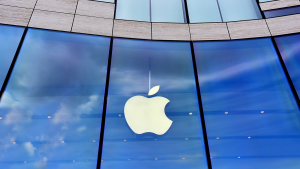
Like Microsoft, Apple (NASDAQ:AAPL) has been left behind by the other Magnificent Seven stocks. Still, shares gained a respectable 38% year-to-date and are up by 220% over the past five years.
However, Apple has several obstacles that prevent me from giving it a buy rating. For one, Apple’s main weakness used to be its biggest strength: smartphones. Millions of people still use iPhones, but fewer people are in a rush to get new devices.
iPhone sales make up close to half of Apple’s total revenue. However, net sales for the device dropped year-over-year. Product sales make up roughly 75% of the company’s total sales. A segment that makes up 75% of Apple’s revenue was down by almost 5% year-over-year.
Apple is relying on its services segment for future growth, but that segment only makes up roughly 25% of the company’s revenue at the moment. Services only grew by 8.2% year-over-year. That’s not an impressive growth rate for the company’s main growth driver.
A growing number of people are taking longer to replace their iPhones. The value proposition isn’t as present as it was in prior years, and people’s finances are tighter now. Apple is a luxury brand, and many luxury brands don’t do well during economic slowdowns.
Apple needs to innovate beyond the smartphone and its core products. That model still generates demand, but flat growth isn’t enough for shareholders.
Meta Platforms (META)
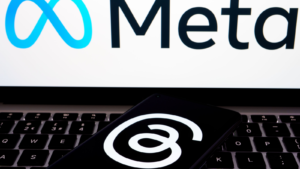
Meta Platforms (NASDAQ:META) is a risky member of the Magnificent Seven that can hurt shareholders in 2024. Shares have gained an impressive 147% year-to-date, but an advertising slowdown combined with a 37 P/E ratio warrants caution.
An advertising slowdown can emerge due to student loan payments, the elevated costs of goods and services, and other factors. Meta Platforms doesn’t offer a good margin of safety compared to other stocks in the advertising sectors.
Meta Platforms has left behind a string of bad earnings in 2022. Revenue increased by 11% year-over-year in the second quarter while net income grew by 16% year-over-year.
These are much better growth rates than last year, but it is important to remember that Meta Platforms is using growth rates against soft earnings from the previous year. In other words, it’s easy to exceed year-over-year benchmarks if you set low standards in the previous year.
Alphabet has a lower valuation which makes it a cautious buy. Meta Platforms’ elevated valuation and vulnerability to an economic slowdown make it a more concerning pick.
It’s important to remember that Meta Platforms saw its stock plunge by over 75% from its 2021 peak to its 2022 trough. While we may not see that type of drop in 2024, it’s important to remember how quickly a reversal can take shape. Meta Platforms is far more reliant on its advertising revenue than Alphabet.
Nvidia (NVDA)
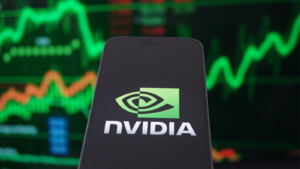
Nvidia (NASDAQ:NVDA) is a semiconductor juggernaut that produces critical CPU chips for artificial intelligence tools and other technologies. An incredible rally saw shares nearly triple year-to-date as the stock crossed the $1 trillion market cap level for the first time.
Normally, a valuation as high as Nvidia’s would turn me away from the stock. However, the company’s exceptional growth rates are very hard to ignore. Nvidia reported 101% year-over-year revenue growth and 843% year-over-year net income growth in the second quarter.
Those types of numbers are extremely hard to find and contributed to the stock holding a forward P/E ratio of 25. The forward P/E ratio is the main draw for me as an investor. It makes the stock easier to justify at current levels.
Nvidia’s growth rates are not sustainable. Investors cannot expect the company to double its revenue growth each year. However, if these growth trends hold for a few more quarters, the valuation will become easy to justify.
Amazon (AMZN)
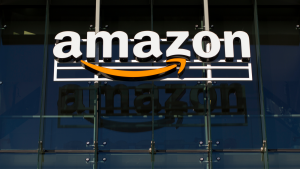
Amazon (NASDAQ:AMZN) shares have gained 45% year-to-date. The 2023 rally helped shares correct course after being flat for the four previous years. While there was plenty of volatility during those four years, shares have gained 52% over the past five years, including year-to-date gains.
Amazon has the most popular e-commerce platform, a top-tier infrastructure as a service in Amazon Web Services, a video game streaming platform in Twitch, and other business segments. Amazon has a forward P/E ratio of 38, and gave investors much to cheer about with its second quarter. In that quarter, Amazon grew its sales by 11% year-over-year.
Investors shouldn’t expect significant gains from Amazon shares. The company seems like a moderate performer, as highlighted by the company’s 52% gain over the past five years. It’s a far cry from the other Magnificent Seven stocks on this list, but it is less vulnerable to a market downturn. People will still need to shop, and companies will continue using the AWS infrastructure.
On this date of publication, Marc Guberti held long positions in NVDA and AAPL. The opinions expressed in this article are those of the writer, subject to the InvestorPlace.com Publishing Guidelines.
